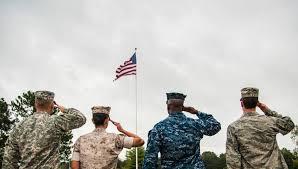Should the military draft include women?

The last time the United States military draft was in effect, it was 1973. Nixon was president. The Vietnam War was drawing to a close, and the Supreme Court had just issued its groundbreaking decision in the Roe vs. Wade case. In other words, the world was a much different place.
It makes sense that the military should evolve alongside society — or it at least makes sense to Southern District Federal Court Judge Gray Miller. In late February, Judge Miller ruled the male-only selective service draft unconstitutional. Miller’s ruling was a declaratory judgment, which means it does not order the government how exactly to amend the draft to make it constitutional, but it is still significant. Explaining his decision, Miller wrote, “While historical restrictions on women in the military may have justified past discrimination, men and women are now similarly situated for purposes of a draft or registration for a draft.”
Though it was put on standby after President Jimmy Carter signed an executive order in 1980, the Selective Service Law still requires men ages 18 to 25 to register with the Selective Service System in case there is a crisis that requires a draft to go into effect. Until a man registers for the draft, he is ineligible for financial aid or any government jobs, and if a man has not registered for the draft by his 26th birthday, he can face penalties including a five-year prison term and/or a $250,000 fine. The law currently states that trans women who were assigned male at birth must register, while trans men do not have to.
Even before Miller’s ruling, the current draft laws were already headed for a change. When the Supreme Court heard the issue in 1981, the court ruled 6-3 in favor of the male-exclusive draft. A key reason behind their decision was that women were ineligible for most combat roles at the time. However, policy changes in 2013 and 2015 have since opened up women’s participation in combat roles, making the logic behind the Supreme Court’s original ruling a moot point.
In January, The National Commission on Military, National and Public Service (NCMNP) — a commission formed by Congress in 2017 inspire more young Americans to participate in the military — released an interim report, which detailed several changes that the Commission was considering regarding the Selective Service System and public service in general. Some of these potential changes involved requiring all Americans to spend a year in national, military, or public service, improving federal agencies’ ability to recruit interns and fellows, and expanding the Selective Service System to include women. These changes are still only under consideration; After the Commission releases its final report in March of 2020, Congress will still have to decide whether these recommendations will become law.
Public opinion on whether women should be required to register is divided in terms of age. As NCMNP chairman Joe Heck said to The Washington Post, “The younger folks — the 18- to 25-year-olds — are all saying that, yes, women should have to register. That it’s a matter of equality — and that’s both males and females. But when you get to an older demographic, those are the ones who are more reluctant to have women register. Those are the ones saying, ‘Don’t draft our daughters.’”
In a piece for Jezebel about the draft, writer Prachi Gupta rightly points out that “to truly achieve equality, the military needs to open its doors to people of all genders—not just women—and eradicate a culture of misogyny and harassment.” Gupta makes the compelling case that admitting women to the draft does not solve the issue of gender disparity in the military, but only scratches the surface as unequal treatment of women runs deep within the military’s culture. On May 2, 2019, the Department of Defense released a report which stated that 20,500 servicemembers reported sexual assault in 2018—13,000 of which were women. Additionally, 24.2 percent of women in the military reported sexual harassment. These are unfortunate statistics, to say the least.
As Gupta suggests, if the government’s goal is to get young people excited and interested in the military, then addressing issues of sexual assault and harassment should be of the utmost importance. Real inclusion is not just about admitting someone into a space, but making that space welcoming and comfortable for them as well. In the words of Elizabeth Van Winkle, Executive Director for the Office of Force Resiliency, featured in the report summary, “Because of our members’ unmatched service and patriotism, they remain the core advantage against our enemies.“ She continues, “Our absolute dedication to their well-being must be no less than the commitment they made when they stepped forward to volunteer.”
More articles by Category: Feminism
More articles by Tag: Equality, Law, Military


























